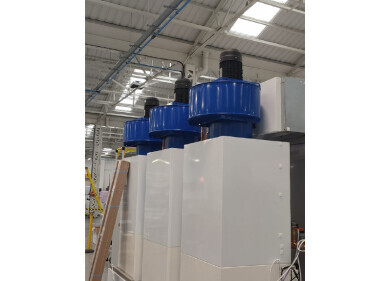Laboratory Products
How Are Chemicals Stored Safely in Labs?
Apr 22 2021
Chemicals are a high-risk hazard in most laboratories, making best practice storage a fundamental component of laboratory safety. Without strict protocols in place laboratories jeopardise the safety of both research personnel and the wider community. So how are chemicals stores safely in labs? Read on as we explore some of the factors to consider when storing chemicals safely in laboratories.
Temperature
As a general rule, chemicals should always be stored away from heat-generating sources such as laboratory ovens and steam pipes. This helps to prevent accidental overheating which can compromise the integrity of a chemical substance and increase the risk of combustion. Every chemical has its own optimal temperatures so it’s important for laboratory employees to have a good understanding of these before developing storage solutions.
Flammability
Flammables should always be kept away from ignition sources such as open flames, sparks and hot surfaces. Laboratories handling class 3 flammable liquids should be equipped with purpose-built flammable storage cabinets designed to meet local and government-enforced health and safety regulations. Not only do purpose-built cabinets allow laboratories to safely store and segregate flammable materials, but they help to protect the contents against damage.
Positioning
To minimise the risk of accidents chemicals should always be stored at eye level or lower. If it’s necessary to store chemicals higher than eye level personnel should always have access to a step ladder that allows them to easily access and identify substances. Shelves should feature an anti-roll lip and should never be overcrowded.
Labelling
Every chemical in a laboratory should be clearly labelled. This includes a text description, as well as the use of lab-specific elements such as signal words, pictograms and hazard statements. Any chemicals without a label should be considered highly toxic and handled with extreme caution. Dating is also important, especially for chemicals with limited shelf lives such as citric acid and ethyl ether.
Segregation
Segregating chemicals according to hazard class can be a good way to heighten health and safety in laboratories. For example, health hazards such as poisons, toxins and carcinogens should be stored together where possible. Similarly, corrosives, reactives, flammables, oxidisers and general chemicals can also be placed together. Any incompatible chemicals and substances, for example copper and hydrogen peroxide, should be physically separated.
Chemicals play an important role in sterilising Bio Safety Cabinets (BSCs), purpose-built laboratory products used to contain hazardous materials in a laboratory setting. Formaldehyde, hydrogen peroxide and chlorine dioxide are some of the most common chemical substances used to sterilise BSCs. Each is explored in further detail by Azbil Telstar Technologies S.L.U. representative VÍctor Lázaro in ‘Decontamination Methods for Bio Safety Cabinets.’
Digital Edition
Lab Asia 31.2 April 2024
April 2024
In This Edition Chromatography Articles - Approaches to troubleshooting an SPE method for the analysis of oligonucleotides (pt i) - High-precision liquid flow processes demand full fluidic c...
View all digital editions
Events
Apr 22 2024 Marrakech, Morroco
Making Pharmaceuticals Exhibition & Conference
Apr 23 2024 Coventry, UK
Apr 23 2024 Kintex, South Korea
Apr 23 2024 Seoul, South Korea
Apr 24 2024 Jakarta, Indonesia

.jpg)


.jpg)













